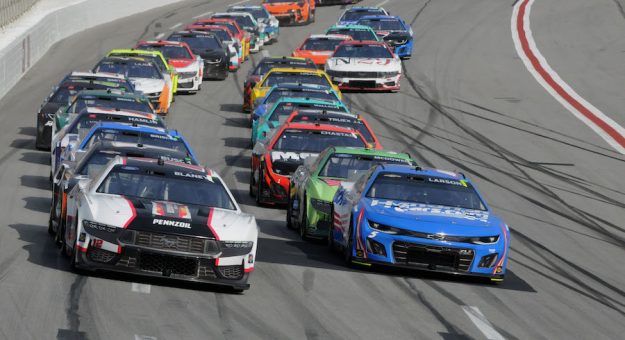The offseason has passed and now the focus is on the year ahead, as competition continues both on the track and in the boardroom.
This month, we will take a closer look at the financial aspects involving key industry stakeholders.
Motorsports has rebounded solidly since the shutdown during the pandemic in 2020. In most cases, it has returned to a “new” normal with tweaks to the schedule, cars, rules, etc. Each entity has needs, wants and desires that impact business operations. These were necessary to keep the product relevant and engaging.
The biggest item on NASCAR’s to-do list was a new media rights deal. After a lengthy period, the sanctioning body announced an agreement with new and existing broadcast partners.
Basically, it is a seven-year contract with four broadcast partners — FOX Sports, Amazon Prime, Warner Bros./Discovery and NBC Sports. The media partners will carry live race coverage from 2025 through 2031. The deal is worth $7.7 billion with an average annual value of $1.1 billion, up 40 percent from the existing deal that started in 2015 and runs through the end of the 2024 season.
These media deals are the largest source of revenue in the ecosystem. The money is divided among tracks, 65 percent; teams, 25 percent; and NASCAR, 10 percent. This allocation has been in place for decades.
Back in 2016, a charter system was officially formed in NASCAR. The Race Team Alliance was the de-facto representative for the teams and their involvement with the sanctioning body. The goal was to create value, increase profits and reduce costs.
The original agreement created 36 charters, which guaranteed them a starting spot at each race. Fields were reduced to 40 cars, with four spaces open each race to qualifying cars.
Teams had the ability to sell or lease their charters. Through the first few years, there was activity generally reflecting the level of sponsorship success a team had.
Recently, the interest in NASCAR team charters has risen. It mirrors the trend that sport is an investable asset class. Scarcity creates value. New investors are showing interest in motorsports properties.
Discussions have been underway for a while concerning a new charter agreement. There have been indications on both sides that they want a deal to be done.
Typical to any negotiations, there is posturing in the media hoping to get the upper edge in the boardroom. The teams announced retaining a high-profile attorney with a successful track record in sports-labor disputes.
The probability that an agreement will be reached is highly likely based on the fact that the money pot has gotten bigger thanks to the new media deals and team values have risen.
Finance is at front and center for any sport — hire the best, spend the most — all with the goal of winning. That sounds pretty normal for motorsports.
